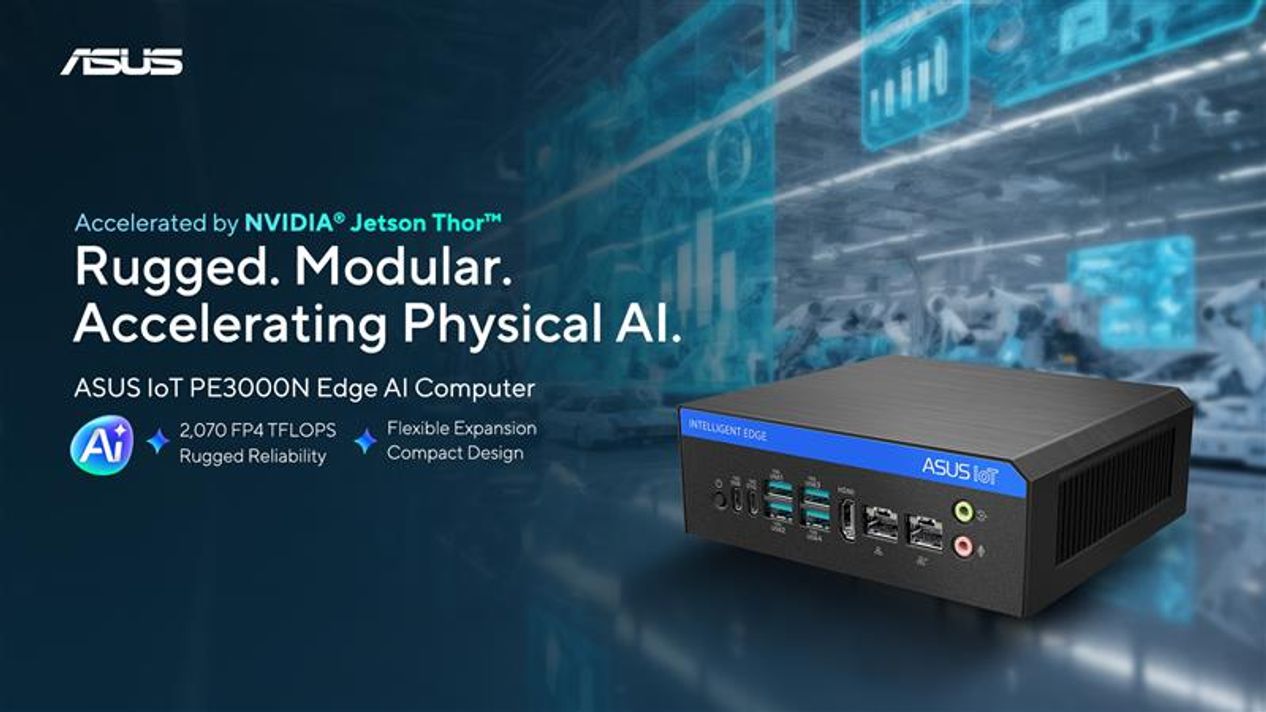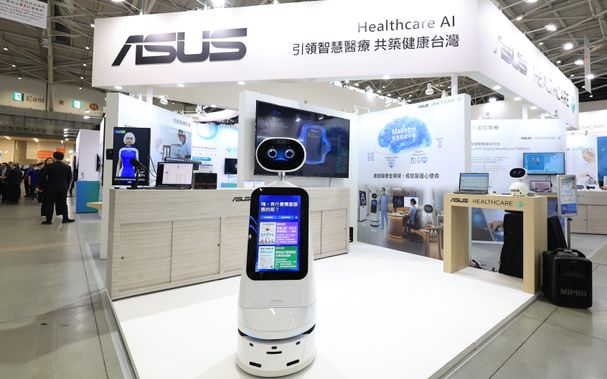ASUS IoT Announces PE3000N
Compact edge-AI platform for physical AI accelerated by NVIDIA Jetson Thor
- Compact edge-AI power: NVIDIA® Jetson Thor with 2,070 FP4 TFLOPS in a space-saving chassis
- Rugged reliability: MIL-STD-810H build with 12-60V input and support for 25 GbE links and 16 GMSL cameras in harsh environments
- Flexible expansion: Modular I/O and optional second stack for custom connectivity and scalable sensor fusion
TAIPEI, Taiwan, October 29, 2025 — ASUS IoT today unveils PE3000N, a compact edge-AI platform engineered to meet the advanced requirements of next-generation robotics and intelligent automation. Accelerated by the cutting-edge NVIDIA® Jetson Thor platform, with advanced NVIDIA Blackwell GPU, a powerful 14-core Arm CPU, and an industry-leading 128GB of LPDDR5X memory, enabling an impressive 2,070 FP4 TFLOPS of AI processing power in a highly space-efficient form factor — making it ideal for integration into robotic systems where both space and energy efficiency are critical. With its robust architecture, PE3000N powered by Jetson T5000 module enables developers and integrators to achieve new levels of autonomy, sensor fusion, and AI-driven control for industrial, commercial, and smart infrastructure deployments.
Rugged reliability for challenging environments
Engineered for durability, PE3000N incorporates MIL-STD-810H industrial-grade connectors and a low-profile chassis to withstand demanding operating conditions. With support for up to four optional 25GbE links and 16 GMSL cameras, it enables high-bandwidth sensor fusion and advanced machine vision, even in the most challenging environments. The wide 12-60V DC input and ignition support provide stable, battery-friendly operation across diverse settings — from factory floors and autonomous vehicles to smart-city infrastructure. With an operating temperature range from -20°C up to 60°C, PE3000N ensures resilient performance and secure data handling, making it a trusted solution for mission-critical robotics, automation, and edge AI deployments.
Configurable design for expansion and versatile deployment
Versatility is a hallmark of PE3000N, featuring a scalable chassis and modular I/O layers that support interfaces such as PoE, GMSL, CAN, and QSFP28 to accommodate evolving sensor and network needs. The optional second stack enables vertical expansion within a compact 2U height, allowing for project-specific I/O customization. Additional capabilities include PTP/PPS for precise sensor synchronization, onboard TPM 2.0 for robust security, and support for LTE/5G/GNSS modules, broadening deployment options across industry sectors.
Empowering AI performance at the edge
PE3000N’s outstanding computational power supports efficient execution of generative AI models, such as visual language models (VLMs) and large language models (LLMs), as well as real-time video analytics and autonomous control tasks. Also, to deliver a seamless cloud-to-edge experience, it runs NVIDIA AI technologies for physical AI applications, including NVIDIA Isaac for robotics, NVIDIA Holoscan platform for real-time sensor processing, and even building and deploying video analytics AI agents using NVIDIA agentic AI workflows like NVIDIA Blueprint for Video Search and Summarization (VSS) from NVIDIA Metropolis. By processing vast amounts of data and facilitating rapid decision-making directly at the edge, PE3000N ensures fully autonomous operations and intelligent analytics with minimal latency, eliminating reliance on cloud connectivity and maximizing responsiveness for modern robotics and industrial automation.





